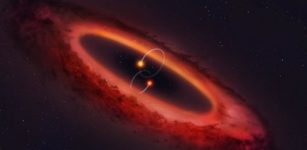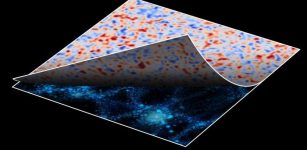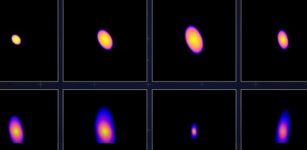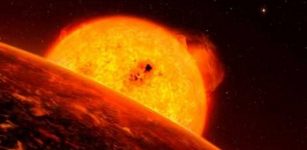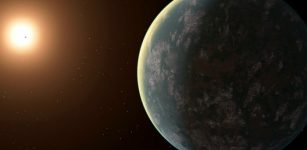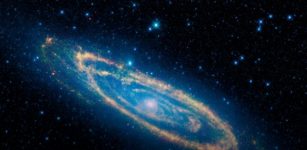New Minor Planets Beyond Neptune Discovered With Dark Energy Survey (DES)
Eddie Gonzales Jr. – MessageToEagle.com – The Dark Energy Survey (DES) has helped researchers to find more than 300 trans-Neptunian objects (TNOs), minor planets located in the far reaches of the solar system, including more than 100 new discoveries.
The Dark Energy Survey (DES) is an international effort to map hundreds of millions of galaxies and detect thousands of supernovae. Another goal is to find patterns of cosmic structure that can reveal the nature of the mysterious dark energy, that is accelerating the expansion of our Universe.
 The Blanco Telescope dome at the Cerro Tololo Inter-American Observatory in Chile,
The Blanco Telescope dome at the Cerro Tololo Inter-American Observatory in Chile,
where the Dark Energy Camera used for the recently completed Dark Energy Survey was housed.
Image: Reidar Hahn, Fermilab
A new study also focuses on a new approach for finding similar types of objects and could aid future searches for the hypothetical Planet Nine and other undiscovered planets.
As we mentioned, the goal of DES is to understand the nature of dark energy by collecting high-precision images of the southern sky. However, DES wasn’t specifically designed with TNOs in mind, its breadth and depth of coverage made it particularly adept at finding new objects beyond Neptune.
“The number of TNOs you can find depends on how much of the sky you look at and what’s the faintest thing you can find,” said graduate student Pedro Bernardinelli, who led the study in cooperation with professors Gary Bernstein and Masao Sako.
As DES was designed to study galaxies and supernovas, the researchers had to develop a new way to track movement. Dedicated TNO surveys take measurements as frequently as every hour or two, which allows researchers to more easily track their movements. “Dedicated TNO surveys have a way of seeing the object move, and it’s easy to track them down,” says Bernardinelli.
“One of the key things we did in this paper was to figure out a way to recover those movements.”
In the first four years of DES data, Bernardinelli started with a dataset of 7 billion “dots,” all of the possible objects detected by the software that were above the image’s background levels. He then removed any objects that were present on multiple nights—things like stars, galaxies, and supernova—to build a “transient” list of 22 million objects before commencing a massive game of “connect the dots,” looking for nearby pairs or triplets of detected objects to help determine where the object would appear on subsequent nights.
With the 7 billion dots whittled down to a list of around 400 candidates that were seen over at least six nights of observation, the researchers then had to verify their results.
“We have this list of candidates, and then we have to make sure that our candidates are actually real things,” Bernardinelli says.
To filter their list of candidates down to actual TNOs, the researchers went back to the original dataset to see if they could find more images of the object in question.
“Say we found something on six different nights,” Bernstein says. “For TNOs that are there, we actually pointed at them for 25 different nights. That means there’s images where that object should be, but it didn’t make it through the first step of being called a dot.”
Bernardinelli developed a way to stack multiple images to create a sharper view, which helped confirm whether a detected object was a real TNO. They also verified that their method was able to spot known TNOs in the areas of the sky being studied and that they were able to spot fake objects that were injected into the analysis.
“The most difficult part was trying to make sure that we were finding what we were supposed to find,” says Bernardinelli.
After many months of method-development and analysis, the researchers found 316 TNOs, including 245 discoveries made by DES and 139 new objects that were not previously published.
With only 3,000 objects currently known, this DES catalog represents 10% of all known TNOs. Pluto, the best-known TNO, is 40 times farther away from the sun than Earth is, and the TNOs found using the DES data range from 30 to 90 times Earth’s distance from the sun.
Some of these objects are on extremely long-distance orbits that will carry them far beyond Pluto.
Written by Eddie Gonzales Jr. – MessageToEagle.com Staff

